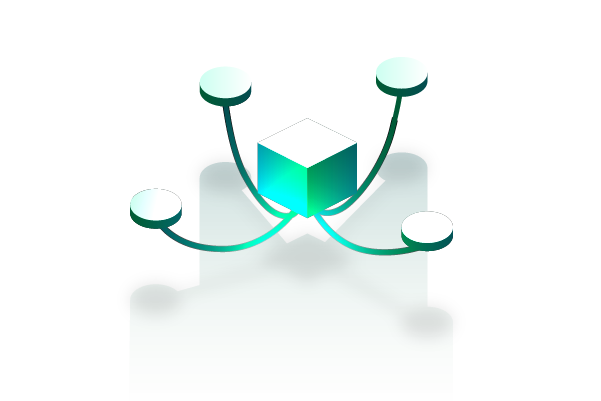In the ever-evolving realm of blockchain technology, the quest for enhanced scalability, security, and interoperability has led to the emergence of formidable competitors to established platforms. Polkadot, known for its pioneering multi-chain architecture, is facing a new wave of challengers, often dubbed ‘Polkadot killers.’
As we delve into the list of 10 Polkadot killers to consider in 2025, it’s important to approach with an open mind. The blockchain world is one of constant change and evolution, and today’s leaders might be tomorrow’s challengers. This article aims to provide a snapshot of the current landscape, highlighting the unique propositions and potential impact of these emerging platforms.
The Rise of Polkadot Killers

In the dynamic landscape of blockchain technology, Polkadot has emerged as a formidable presence, renowned for its unique approach to interoperability and scalability. This platform, designed to enable different blockchains to communicate and share information seamlessly, has established a significant benchmark in the industry. Polkadot achieves this through its innovative architecture, which includes a main relay chain for security and a network of parallel chains (parachains) for diverse transactions and operations, thereby ensuring high scalability and flexibility.
Despite Polkadot’s advancements, the relentless pace of technological evolution has ushered in a new era of blockchain platforms, often referred to as ‘Polkadot killers.’ This new wave of blockchains isn’t just about competing; it’s about transcending the standards set by Polkadot. These emerging platforms are not content with the status quo; they aim to redefine it by pushing the boundaries of what’s possible in blockchain technology.
Also Read: What is Crypto Airdrop? A Complete Guide to Its Relevance and Procedure
The so-called ‘Polkadot killers’ are characterized by their ambitious goals and cutting-edge features. They seek to address the ever-growing and intricate demands of the digital era, where speed, efficiency, and security are not just valued but expected. These platforms are stepping up by proposing more advanced solutions in terms of scalability and interoperability, the very areas where Polkadot has excelled.
In essence, the rise of ‘Polkadot killers’ signifies a healthy and robust competition within the blockchain space, driving innovation and leading to the development of more advanced, efficient, and user-friendly platforms. As these new contenders emerge, they challenge existing paradigms and encourage continuous improvement, contributing to the overall maturation and evolution of the blockchain industry.
Top 10 Polkadot Killers to Consider in 2025

In 2025, several emerging blockchain projects might be considered as potential competitors or alternatives to Polkadot. These projects could offer unique features, use cases, or technological advancements that challenge Polkadot’s dominance or cater to specific niches within the blockchain ecosystem. Here are ten such “Polkadot Killers” to watch in 2024:
1. Hela Labs
This emerging layer 1 blockchain protocol is rapidly gaining attention for its focus on revolutionizing the Web3 landscape. Hela Labs is addressing core challenges in the blockchain domain, such as scalability, interoperability, and enhancing user experiences. It’s not just about the technology; the approach also encompasses fostering a seamless connection between different blockchains, promoting a unified ecosystem for efficient data and value exchange.
Privacy and stablecoin-based gas fees are among its standout features, ensuring transaction costs remain stable irrespective of market fluctuations. The ambition of Hela Labs is clear: to drive practical, real-world blockchain usage and establish a new benchmark in the sector.
2. BNB Smart Chain
Operated by Binance, the world’s largest cryptocurrency exchange, the BNB Smart Chain is a formidable force in the blockchain arena. It’s celebrated for its quick and cost-effective transaction capabilities, often setting it apart as a serious Ethereum competitor.
The chain’s compatibility with Ethereum’s Virtual Machine (EVM) and its innovative Proof of Staked Authority (PoSA) consensus mechanism amplify its appeal. A vast user base and a feature-rich environment similar to Ethereum’s ecosystem further solidify its position in the market.
3. Cardano
Distinguished by its methodical, academically-driven development approach, Cardano is a blockchain platform that doesn’t shy away from rigorous scrutiny. Its unique consensus algorithm, Ouroboros, is not only a testament to its commitment to security but also paves the way for remarkable scalability. The platform’s continuous evolution and its academic foundation make it a formidable contender, often touted as a serious rival to Ethereum’s dominance.
4. Solana
Known for integrating proof-of-stake (PoS) and proof-of-history (PoH) mechanisms, Solana stands out with its ultra-fast transaction capabilities and minimal fees. It’s not just about speed; the platform’s energy efficiency and a vibrant ecosystem of decentralized applications (dApps) also contribute to its growing prominence. Despite past controversies, Solana continues to make a mark as a high-speed, reliable blockchain platform.
5. Ethereum
A central pillar in the blockchain domain, it is renowned for its extensive applications in smart contracts and decentralized platforms, notably shaping the DeFi and NFT landscapes. The network’s transition to Ethereum 2.0 is a strategic evolution aimed at enhancing scalability and energy efficiency, addressing core challenges like transaction speed and network congestion.
This shift involves a significant move from Proof of Work to Proof of Stake consensus mechanism, promising a reduction in energy usage and an increase in transaction throughput with the introduction of sharding. This transformative upgrade not only fortifies Ethereum’s pivotal role in blockchain technology but also sets the stage for broader adoption and advanced blockchain solutions, maintaining its status as a trailblazer in the cryptocurrency arena.
6. Avalanche
Positioned as a high-speed, scalable, and customizable blockchain platform, Avalanche is making its mark with a distinct approach to consensus, known as the Avalanche consensus. It’s designed to provide developers with a flexible, efficient environment for building decentralized applications and smart contracts. As it continues to grow, Avalanche’s commitment to speed, user-friendliness, and a robust development environment underlines its status as a “Polkadot killer”.
7. Cosmos (ATOM)
Cosmos, often dubbed the “Internet of Blockchains,” is committed to solving some of the most pressing problems in the blockchain space, including scalability and interoperability. It enables different blockchains to communicate and share data seamlessly, fostering a more connected and efficient blockchain ecosystem. Cosmos’s vision of creating an interconnected network of blockchains aims to streamline transactions and interactions across various platforms.
8. Tezos (XTZ)
Tezos stands out with its self-amending cryptographic ledger, allowing the network to upgrade and improve itself over time without the need for hard forks. This innovative feature ensures that Tezos remains up-to-date with the latest technological advancements and community consensus. The platform’s focus on on-chain governance and formal verification makes it a secure and future-proof choice in the blockchain space.
9. Algorand (ALGO)
Known for its exceptional speed and efficiency, Algorand is a decentralized network that aims to address the blockchain trilemma of ensuring security, scalability, and decentralization simultaneously. Its unique consensus mechanism and commitment to providing a seamless user experience make it an attractive platform for a wide range of applications, from financial services to decentralized applications.
10. NEAR Protocol (NEAR)
Focused on usability and sustainability, NEAR Protocol is designed to offer an ideal environment for dApp development and fostering a creator-friendly ecosystem. The platform emphasizes scalability and user experience, ensuring that developers and users alike can benefit from a high-performing, accessible blockchain network.
As we explore these Polkadot killers, it’s evident that each brings its own flavor and innovation to the table. They are not just contenders but pioneers in their own right, pushing the boundaries of what’s possible in the blockchain space.
The Future of Interoperability

The concept of interoperability in blockchain technology is fundamental to the future development and usability of various blockchain platforms. Traditionally, blockchains have operated in isolation, each serving as a separate ledger with its own distinct protocols, rules, and governance structures. This isolation leads to a fragmented ecosystem where transferring information or assets between different blockchains is cumbersome, if not impossible. However, as the blockchain sector evolves, the demand for interconnectedness and the ability to transfer data and assets across various platforms is growing exponentially.
Interoperability addresses this need by allowing different blockchains to communicate and interact with each other seamlessly. This capability is not just about transferring assets from one chain to another; it’s about enabling a range of interactions and functionalities that were previously unfeasible due to the isolated nature of traditional blockchains. For instance, smart contracts on one blockchain might trigger actions or access data on another, leading to complex, cross-chain operations.
This competition and continuous innovation are driving the blockchain industry forward. As these new platforms strive to outperform existing solutions like Polkadot, the entire sector stands to benefit. The advancements in interoperability are expected to lead to a more connected, efficient, and user-friendly blockchain ecosystem, where the potential applications and use cases can extend far beyond what we currently envisage. The future of blockchain interoperability looks promising, with the potential to revolutionize industries by enabling fully integrated and interoperable blockchain networks.
Scalability and Speed: The Race Continues
Scalability and transaction speed remain critical hurdles in the evolution of blockchain technology. Historically, traditional blockchain platforms like Bitcoin and Ethereum faced limitations due to their design, which often led to slow transaction times and scalability issues as the number of users and transactions grew. To overcome these challenges, newer platforms like Polkadot emerged, introducing innovative solutions to enhance scalability and speed.
Polkadot, with its unique multi-chain architecture, allows multiple transactions to be processed in parallel, significantly increasing throughput and efficiency. This parallel processing capability, known as sharding, addresses the scalability issue by ensuring that the increase in the number of transactions does not bog down the network. Moreover, Polkadot’s ability to connect different blockchains enables seamless asset and data transfer, further enhancing its scalability potential.
However, the technological landscape is dynamic, and the quest for more scalable and faster blockchain solutions continues. The next generation of blockchain platforms is pushing the boundaries even further. These platforms are not just iterating over the existing solutions but are introducing fundamentally new approaches to consensus mechanisms and network designs.
For instance, some are exploring the use of Directed Acyclic Graphs (DAGs) instead of the traditional blockchain structure, aiming to enable higher transaction throughput. Others are implementing more energy-efficient and faster consensus algorithms like Proof of Stake (PoS) and its variations, moving away from the energy-intensive Proof of Work (PoW) model.
As we move forward, the race in the blockchain space is not just about being faster or more scalable. It’s about building holistic platforms that offer a balanced blend of speed, scalability, security, and decentralization, catering to the diverse and ever-growing demands of the industry. The continuous efforts in research and development, collaboration among communities, and the open-source nature of blockchain technology are pivotal in driving these advancements, ensuring that the blockchain space remains at the forefront of technological innovation.
The Quest for Enhanced Security

In the rapidly evolving landscape of blockchain technology, the term “Polkadot killers” refers to emerging blockchain platforms seeking to challenge or surpass the capabilities and performance of the Polkadot network. Polkadot, known for its unique interoperability and scalability features, has set a high standard in the blockchain industry, prompting new platforms to strive for innovation and improvement in various aspects, including security.
Security is a critical concern in the blockchain domain, primarily because digital assets and decentralized applications (dApps) are increasingly becoming integral to various sectors, representing substantial economic value and attracting attention from both genuine users and malicious actors. Recognizing the immense responsibility of protecting these digital assets, Polkadot killers are intensively focusing on fortifying their security frameworks. This involves a comprehensive approach, encompassing multiple layers and dimensions of security:
- Advanced Cryptographic Techniques: These platforms are leveraging state-of-the-art cryptographic methods to ensure data integrity and confidentiality. This includes the implementation of robust encryption algorithms, secure hashing functions, and zero-knowledge proofs to enable privacy-preserving transactions and interactions on the blockchain.
- Innovative Governance Models: Governance plays a pivotal role in the security and resilience of blockchain networks. Polkadot killers are experimenting with and adopting innovative governance frameworks that ensure decentralized and democratic decision-making processes. This not only aids in the agile and effective management of network upgrades and changes but also helps in maintaining security protocols and responding promptly to any emerging threats or vulnerabilities.
Also Read: ERC-4907: Understanding the NFT Rental Market
- Enhanced Consensus Mechanisms: The consensus mechanism is the heart of a blockchain network, ensuring that all transactions are validated and agreed upon by the network participants. These new platforms are exploring and implementing advanced consensus algorithms that are not only scalable and efficient but also highly resistant to various types of attacks, such as the 51% attack.
- Interoperability and Cross-Chain Communication: As these platforms aim to enable seamless interaction with other blockchains, they are also focusing on secure cross-chain communication protocols. This is crucial for maintaining security across a heterogeneous network environment, where assets and data are frequently transferred and exchanged across different blockchain platforms.
- Smart Contract Security: Given the pivotal role of smart contracts in automating and executing critical business logic on blockchain platforms, Polkadot killers are emphasizing the development of secure and robust smart contract languages and auditing processes. This includes thorough testing frameworks, formal verification processes, and bug bounty programs to identify and rectify vulnerabilities proactively.
As Polkadot killers continue to evolve and mature, their dedication to advancing security measures is a testament to their commitment to providing a trustworthy and resilient infrastructure for the future of decentralized digital ecosystems. This not only helps in safeguarding valuable digital assets but also in fostering a secure and inclusive environment for users and developers to innovate and build upon.
Conclusion
The landscape of blockchain technology is one of relentless innovation and competition. As we’ve explored, the so-called Polkadot killers are more than just competitors; they are integral players in the ongoing evolution of decentralized technology. Each platform brings its own unique strengths and visions for the future, collectively pushing the boundaries of scalability, interoperability, and security.
As we move further into 2025 and beyond, keeping an eye on these 10 Polkadot killers will be essential for anyone involved in the blockchain space. They are not just shaping the future of decentralized technology; they are actively redefining what’s possible, ushering in a new era of digital innovation and connectivity. The journey of blockchain evolution is far from over, and the contributions of these platforms will undoubtedly play a pivotal role in the chapters to come.
With this comprehensive look into the Polkadot killers of 2025, it’s clear that the blockchain world is on the cusp of yet another transformation. As investors, developers, and enthusiasts, our understanding and engagement with these platforms will be crucial in navigating the future of decentralized technology. The horizon is bright, and the potential for innovation and growth is limitless.
Disclaimer: The information provided by HeLa Labs in this article is intended for general informational purposes and does not reflect the company’s opinion. It is not intended as investment advice or recommendations. Readers are strongly advised to conduct their own thorough research and consult with a qualified financial advisor before making any financial decisions.

Joshua Soriano
I am a writer specializing in decentralized systems, digital assets, and Web3 innovation. I develop research-driven explainers, case studies, and thought leadership that connect blockchain infrastructure, smart contract design, and tokenization models to real-world outcomes.
My work focuses on translating complex technical concepts into clear, actionable narratives for builders, businesses, and investors, highlighting transparency, security, and operational efficiency. Each piece blends primary-source research, protocol documentation, and practitioner insights to surface what matters for adoption and risk reduction, helping teams make informed decisions with precise, accessible content.
- Joshua Soriano#molongui-disabled-link
- Joshua Soriano#molongui-disabled-link
- Joshua Soriano#molongui-disabled-link
- Joshua Soriano#molongui-disabled-link

